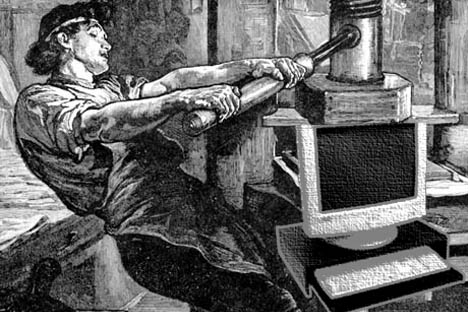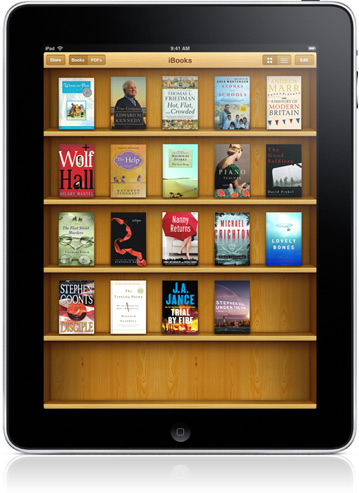
Today the Wall Street Journal ran a fascinating interview with Stephen King, asking him how he feels about the Kindle. “I think it changes the reading experience,” the best-selling author told the Journal, saying that reading on the Kindle is “a little more ephemeral.” But of course, there’s also advantages to a technologically-enhanced reader, as King discovered when he’d downloaded a 700-page book onto his Kindle for research. “It didn’t have an index, but I was able to search by key words. And that’s something no physical book can do…”
He also sees other advantages in reading ebooks. 63-year-old King recently purchased a printed edition of Faceless Killers — a 1997 mystery by Henning Mankell — only to discover that its type was too small for him to read! But he’s still one of those people who loves a physical book, and even after buying an ebook of a new historical fiction novel, he also bought a hard copy just to display it on his shelf. “I want books as objects,” he admits. “It’s crazy, but there are people who collect stamps, too.”
His love of books is understandable, since he’s sold more than 500 million books himself, according to Wikipedia, writing more than 49 different novels. And a week from Tuesday, King will publish a new collection of four stories called “Full Dark, No Stars” (where at least one story is based on a real-life murder case — the story of a woman who discovers she’s married to a serial killer!) It will be available on the Kindle for just $14.99, but King also holds the distinction of having released the first mass-market ebook, over 10 years ago. And recently, he wrote a short story with its own strange twist which was actually about a Kindle-like reading device. “It took three days, and I’ve made about $80,000.”
Click here to download that short story — UR — to your Kindle.
Stephen King is the same age as James Patterson — who just sold his one millionth ebook in Amazon’s Kindle store on Tuesday — but apparently, King’s not a fan. In December of 2008 he’d called Patterson a “terrible writer,” and once described Patterson’s work as “dopey thrillers,” according to Wikipedia — though his remarks had a larger context. King heard J. K. Rowling read his books when she was young, and asked whether that had an influence. He names two authors he’d read himself as a young man — one whose writing had a much bigger impact on his style. But then he gets detoured into discussing which successful authors he would consider to be good authors — comparing J.K. Rowling to Stephenie Meyer, and eventually weighing in on Jodi Picoult, Dean Koontz, and even Perry Mason creator Erle Stanley Gardner.
So when King finally got to James Patterson, he was basically talking in bullet points, saying Patterson “is a terrible writer but he’s very very successful. People are attracted by the stories, by the pace…” And this July, Time magazine got to ask Patterson for his response to “critics like author Stephen King, who say you’re not a great prose stylist.” His answer? “I am not a great prose stylist. I’m a storyteller. There are thousands of people who don’t like what I do. Fortunately, there are millions who do…”
But the literary world continues to evolve and in Friday’s interview, King reveals that now almost half of his reading time is spent on ebooks. But he still adds that it’s hard to predict the future. “People like myself who grew up with books have a prejudice towards them,” he says, suggesting that maybe there’s room for both formats. “I think a lot of critics would argue that the Kindle is the right place for a lot of books that are disposable, books that are read on the plane.
“That might include my own books, if not all, then some.”


















